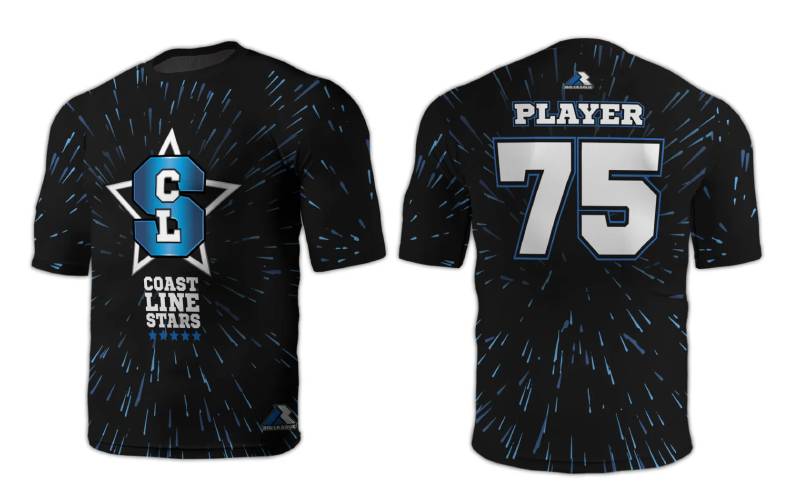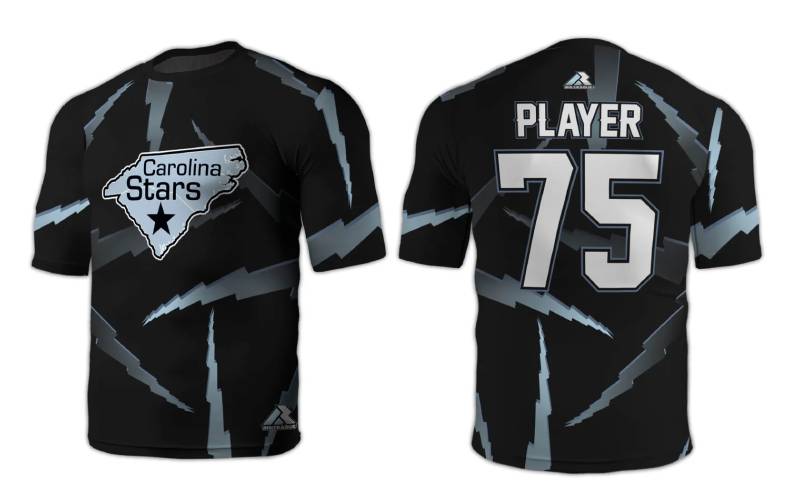
Flag football jerseys play a crucial role in the comfort and performance of players on the field. The choice of materials for these jerseys is pivotal, impacting factors such as breathability, comfort, durability, and moisture management. This discussion delves into various fabrics used in flag football jerseys, highlighting their qualities and how they contribute to enhancing the overall experience for athletes.
Choosing The Right Fabric For Flag Football Jerseys
Selecting the appropriate fabric for flag football jerseys is essential to ensure both comfort and performance. Polyester is a popular choice due to its durability, lightweight feel, and excellent moisture-wicking properties. It allows sweat to evaporate quickly, keeping players cool and dry during intense gameplay. Nylon, another common fabric, offers similar benefits with added strength and resistance to abrasion, making it suitable for rougher playing conditions. These synthetic fabrics are preferred for their ability to withstand repeated washings without losing shape or color, thus maintaining the jersey’s aesthetic appeal over time.

Breathable Materials Key To Flag Football Jerseys Comfort
Breathability is paramount in flag football jerseys as it regulates body temperature and prevents overheating. Mesh panels strategically placed in high-heat zones enhance airflow, promoting ventilation where it’s most needed. This feature is often integrated into jerseys made from lightweight synthetic blends or microfiber fabrics, which maximize air circulation while minimizing weight. By allowing heat and moisture to escape, breathable materials contribute significantly to the comfort and endurance of players throughout the game.
Performance Fabrics For Flag Football Jerseys Explained
Performance fabrics in flag football jerseys are designed to enhance athletic performance by addressing specific needs such as flexibility, stretch, and movement. Spandex, commonly blended with polyester or nylon, provides elasticity and allows for unrestricted mobility, crucial for agility and quick movements on the field. These fabrics are engineered to stretch in multiple directions, accommodating the dynamic range of motions required in flag football, from sprinting and jumping to diving and catching.
Durability And Comfort In Flag Football Jerseys Materials
Durability goes hand in hand with comfort in flag football jerseys, ensuring they withstand the rigors of intense gameplay and frequent use. High-tenacity polyester fibers are renowned for their strength and resilience, making them ideal for jerseys that endure rough handling and friction. Reinforced stitching and fabric reinforcements at stress points further enhance durability, preventing tears and fraying over time. Despite their robust build, these materials maintain a soft touch against the skin, prioritizing comfort without compromising on longevity.
Moisture Wicking Fabrics For Flag Football Jerseys
Moisture-wicking fabrics are indispensable in flag football jerseys, actively managing sweat to keep players dry and focused. Advanced polyester microfibers are engineered to absorb moisture from the skin and disperse it across the fabric’s surface, where it can evaporate quickly.Nylon, another common fabric, offers similar benefits with added strength and resistance to abrasion, making it suitable for rougher playing conditions. These synthetic fabrics are preferred for their ability to withstand repeated washings without losing shape or color, thus maintaining the jersey’s aesthetic appeal over time.
This process, known as capillary action, helps regulate body temperature and prevent discomfort caused by sweat buildup. Jerseys with moisture-wicking properties remain lightweight and breathable throughout the game, enhancing overall performance by maintaining optimal comfort levels.
Flag Football Jerseys Synthetic Vs. Natural Materials
The debate between synthetic and natural materials in flag football jerseys revolves around performance versus tradition. While synthetic fabrics like polyester excel in moisture management and durability, natural fibers such as cotton offer a softer feel and may appeal to players preferring natural materials. However, cotton tends to retain moisture and may become heavy during gameplay, affecting comfort and agility. Ultimately, the choice between synthetic and natural materials depends on individual preferences regarding performance attributes versus tactile sensation.
Innovative Textiles Enhancing Flag Football Jerseys
Recent advancements in textile technology continue to revolutionize flag football jerseys, introducing innovative materials that elevate performance and comfort. Anotechnology treated fabrics provide enhanced water and stain resistance without compromising breathability or flexibility. Additionally, eco-friendly fabrics made from recycled materials contribute to sustainability efforts while meeting the demands of competitive sports.Nylon, another common fabric, offers similar benefits with added strength and resistance to abrasion, making it suitable for rougher playing conditions. These synthetic fabrics are preferred for their ability to withstand repeated washings without losing shape or color, thus maintaining the jersey’s aesthetic appeal over time. These innovations underscore a commitment to improving athletic apparel through cutting-edge materials science, ensuring that flag football jerseys evolve to meet the evolving needs of athletes.
Conclusion
Flag football jerseys rely on a careful selection of materials to optimize comfort and performance on the field. From moisture-wicking polyester blends to breathable mesh panels and durable stitching, each component plays a crucial role in enhancing the player’s experience. Whether prioritizing breathability, durability, or flexibility, the evolution of jersey materials continues to drive innovation in sports apparel, ensuring that athletes can perform at their best while feeling comfortable and supported throughout the game.